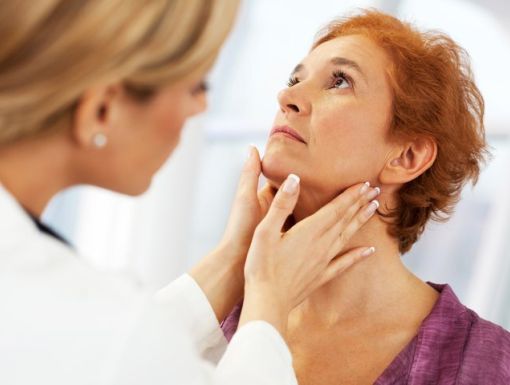
How to Prevent Coronavirus in Your Workplace
In light of the coronavirus (COVID-19) outbreak, many businesses are closing temporarily or are encouraging employees to work remotely to prevent the spread of the virus. However, many essential businesses are continuing to operate for the good of the public. If you fall into one of these groups and can’t self-isolate, there are still ways you can protect yourself from the spread of germs.
Maintain distance
According to the CDC, COVID-19 spreads mainly from person to person through respiratory droplets produced when an infected person coughs or sneezes. Try to maintain at least 6 feet of distance between yourself and your coworkers. This may mean rearranging your office space a little or avoiding gathering in the break room for a while.
Say hello to a conference call
Many workplaces already have video conferencing or teleconferencing options available, so skip the conference room and open a phone line for your next big meeting. You can share screens, give presentations, and prevent the spread of germs that comes from having people in close contact.
Practice good cough and sneeze etiquette
Cough and sneeze etiquette are especially important to control the spread of infection in the workplace. You can follow the below recommendations to prevent the transmission of respiratory droplets and slow the spread of germs.
- Cover your mouth and nose with a tissue when coughing or sneezing
- Throw the tissue in the trash immediately after use
- Wash your hands with soap and water or use an alcohol-based hand sanitizer if soap and water are not available.
Wash your hands frequently
Wash your hands after blowing your nose, coughing or sneezing, after using the bathroom, before eating, and after coming in contact with objects that others have touched like doorknobs, the printer, or shared office supplies.
Make sure you wash your hands properly by following the steps below:
- Wet your hands with clean, running water and apply soap.
- Lather soap in your hands, applying to the back, front, between your fingers, and under your nails.
- Scrub your hands for at least 20 seconds.
- Rinse your hands well under clean, running water.
- Dry your hands using a clean towel or air dry them.
Sanitize your workspace
Routinely clean the most frequently touched surfaces in your office such as tables, doorknobs, light switched, handles, desks, and shared offices supplies such as staplers, hole punches, printers, or copiers. Wear disposable gloves when cleaning and disinfecting surfaces and discard them after each cleaning. To disinfect, use diluted household bleach solutions or alcohol solutions with at least 70% alcohol. The CDC has a full list of recommendations for cleaning and disinfecting.
Stay home if you are sick
Now more than ever it’s important to stay home if you are sick. If you develop a fever, 100.4 degrees F or greater using an oral thermometer, or show symptoms of respiratory illness you should stay home until you are free of fever and other symptoms for at least 24 hours without the use of fever reducing or symptom altering medicines. Some of these include Tylenol, Motrin, Advil, and Aleve. The CDC recommends that employers waive any requirements for healthcare providers’ notes for employees who are sick. Doctors’ offices and medical facilities may be experiencing a high volume of patients and may not be able to provide documentation in a timely manner.
The CDC currently offering COVID-19 recommendations for businesses and employers.
In early December 2020, the Centers for Disease Control and Prevention (CDC) updated their recommendations regarding COVID-19 exposure quarantine. While this doesn't apply to healthcare workers and other essential personnel, the guidance now states that quarantine can end after 10 days (rather than 14) with no testing and no symptoms. Quarantine can end after seven days with a negative test and no symptoms.
Defer non-essential business-related travel
If you have not already, you may consider postponing business-related travel as crowded travel settings may increase your chances of getting COVID-19. Here are a few other considerations that could impact your decision to travel:
- Is COVID-19 spreading where you’re going?
- Do you have a plan for taking time off from work in case you are asked to stay home for 14 days to self-monitor or if you get sick from COVID-19?
- Do you live with someone who is older or immunocompromised?
- Is COVID-19 spreading where you live?
Stay hydrated
Getting enough fluids can help to thin mucus, flush out germs, and keep your system running smoothly. Aim to drink half your body weight in ounces of fluid each day. For example, someone weighing 160 pounds should consume 80 ounces of water each day. Bring a reusable water bottle to work with you to make sure you’re following this recommendation. Just make sure you thoroughly clean your water bottle!
Take advantage of virtual visits
If you are feeling ill, take advantage of Ochsner Anywhere Care. Ochsner Anywhere Care virtual visits offer immediate, 24/7 access to a healthcare provider from your smartphone, tablet, or computer. Depending on your symptoms, travel history, and other factors, your Anywhere Care doctor may recommend you go to an urgent care, emergency room, or make a follow-up appointment with a primary care provider or specialist.
For the latest updates on COVID-19, visit Ochsner.org/coronavirus.
The information in this blog post is accurate at the time of publication. However, as the situation surrounding COVID-19 continues to change, it's possible that information has changed since being published. While Ochsner Health is trying to keep our blog posts as up-to-date as possible, we also encourage readers to stay informed on news and recommendations by using the CDC website.



